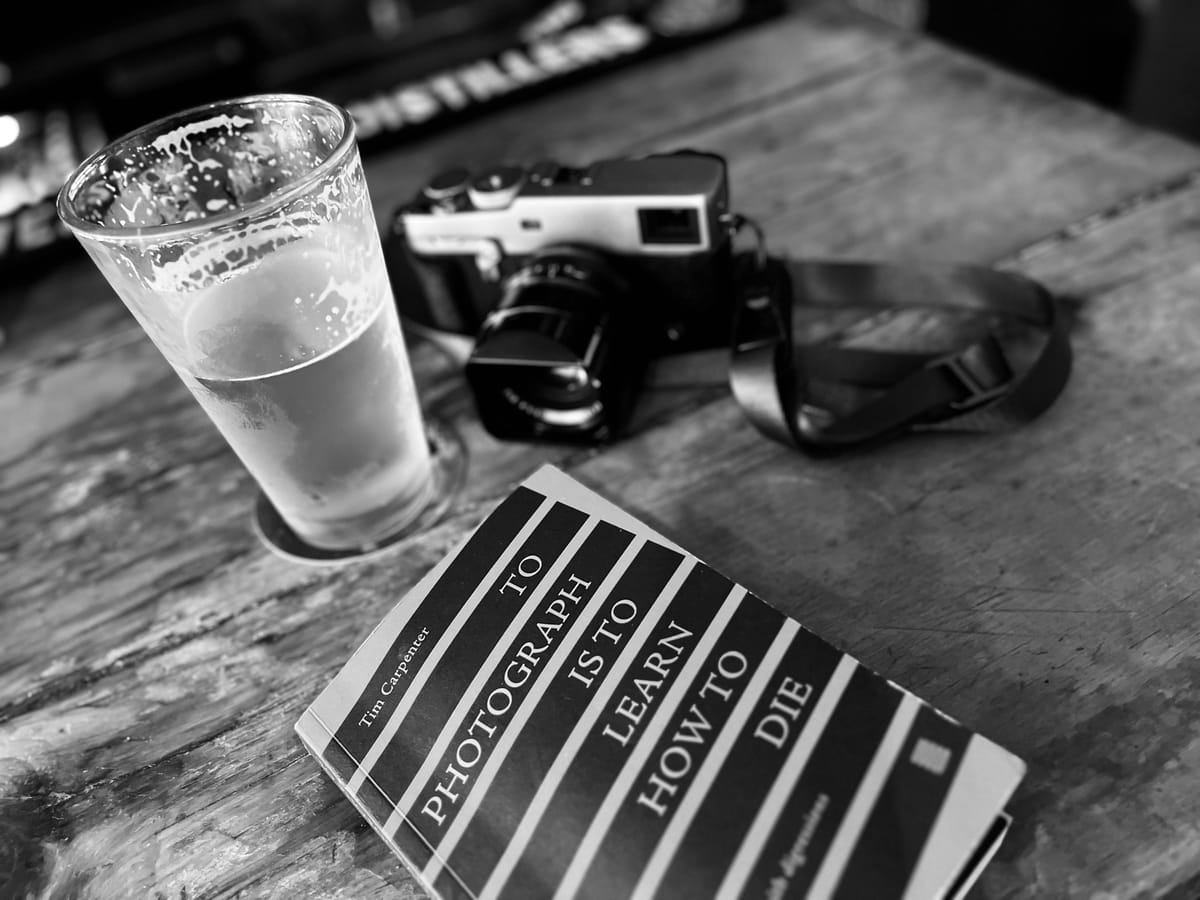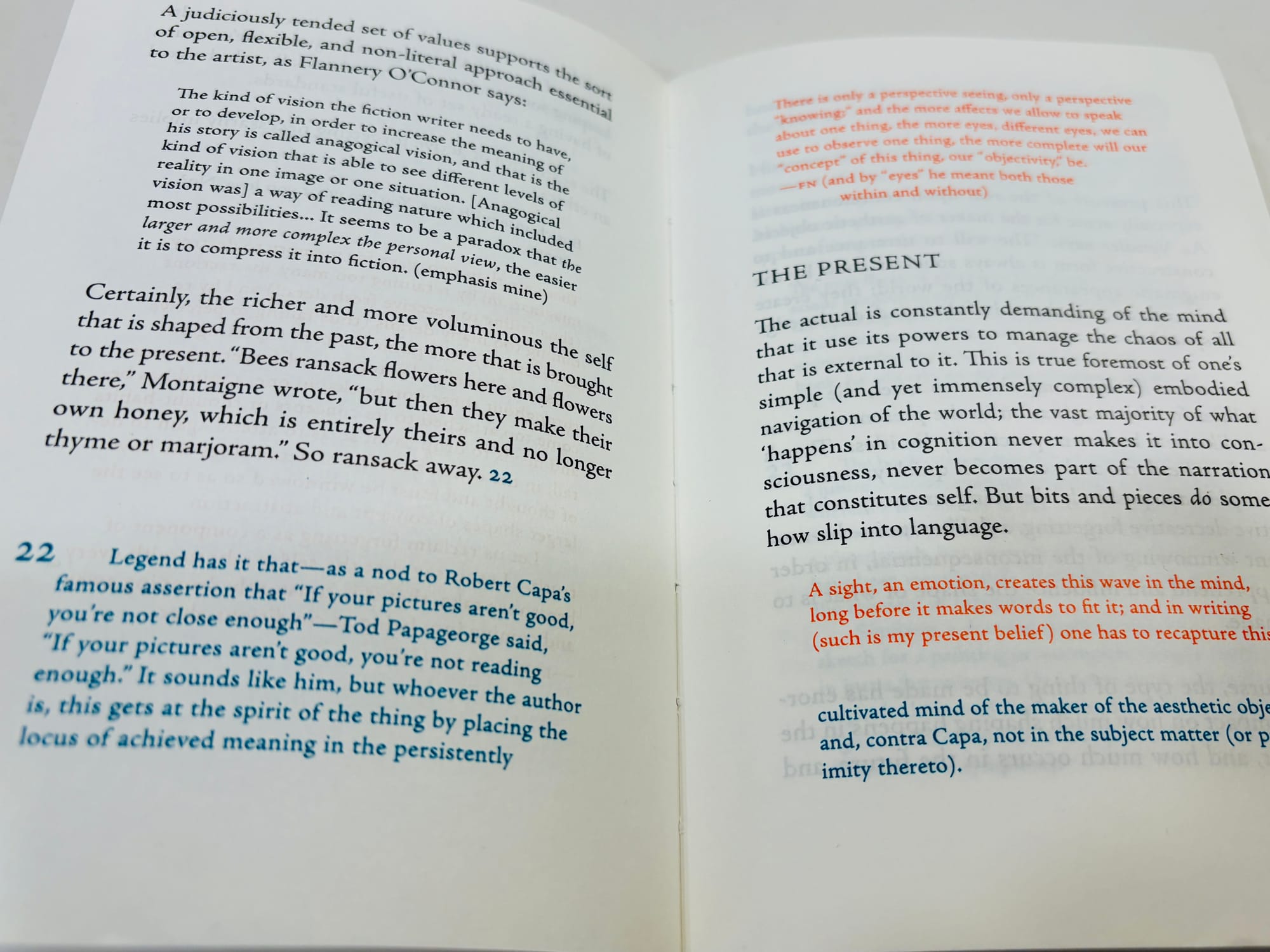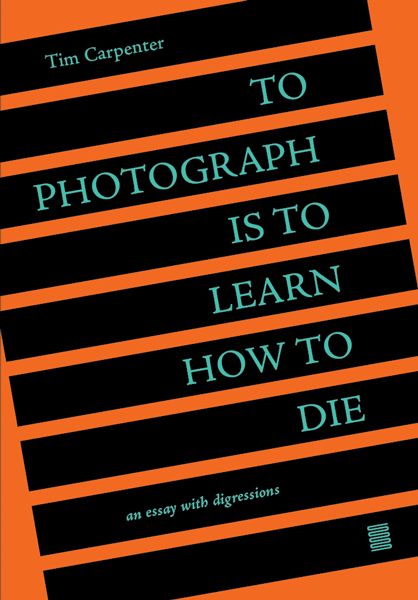An Instant Classic: To Photograph is to Learn How to Die

Italo Calvino said that a classic is a book that has “never finished saying what it has to say.” And so it goes with Tim Carpenter's book-length essay To Photograph is to Learn How to Die. Heavily steeped in literature—most notably Wallace Stevens, but also many thinkers throughout history—the book is a buffet of quotes put in context of our beloved vocation.
...photography is unique among the arts in its capacity for easing the fundamental ache of our mortality; for managing the breach that separates the self from all that is not the self; for enriching one’s sense of freedom and personhood; and for cultivating meaning in an otherwise meaningless reality.
— From the publisher's description
To my mind, photography itself is close to literary form, which may be why this book resonates with me. Here we find the poet and classicist, Anne Carson, the poetry critic Helen Vendler, fiction writers like Donna Tartt and Flannery O'Conner, and T.S. Eliot, all mingling with the minds the likes of John Szarkowsky, Cartier-Bresson, and Robert Adams.
Legend has it that—as a nod to Robert Capa's famous assertion that ‘If your pictures aren't good, you're not close enough’—Tod Papageorge said, ‘If your pictures aren't good, you're not reading enough.’ It sounds like him, but whoever the author is, this gets at the spirit of the thing by placing the locus of achieved meaning in the persistently cultivated mind of the maker of the aesthetic object and, contra Capa, not in the subject matter (or proximity thereto).
The book can be difficult to read for its digressions. It's printed in three colors that reflect the various “voices” of the book: the primary text, quotes, and asides from the primary text. As a reader we are left to approach this as we wish, either skipping past colored passages or reading in a linear fashion, as I did my first time with it. Admittedly I became frustrated a bit with the digressions, forgetting where we were beforehand, but nonetheless found the whole impactful and the digressions make for easy dipping into later.

To Photograph is to Learn How to Die might be the best non-required reading of anyone's photography practice, right next to Stephen Shore's Modern Instances, but, for me, right from the beginning, it felt necessary, as though someone managed to put in words feelings I couldn't describe myself, or managed to get so many of the thinkers whom I value into a room for a conversation on what it means to need to create.
Photographs ‘give us matter for thinking because they combine a convincingly real image of the world with a measure of control resembling the shaping power we take as artistic vision...’
Books Mentioned



